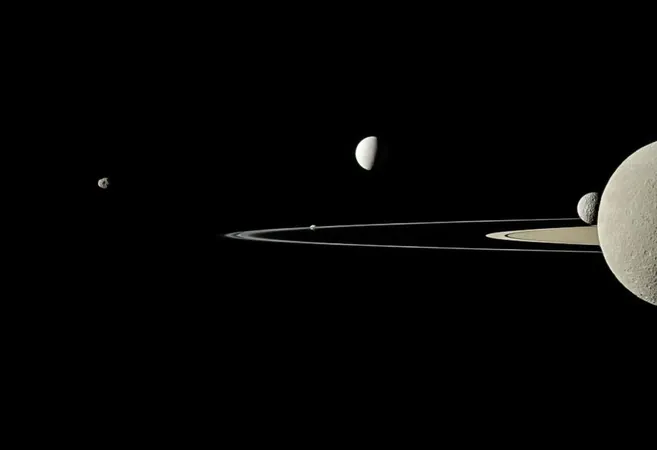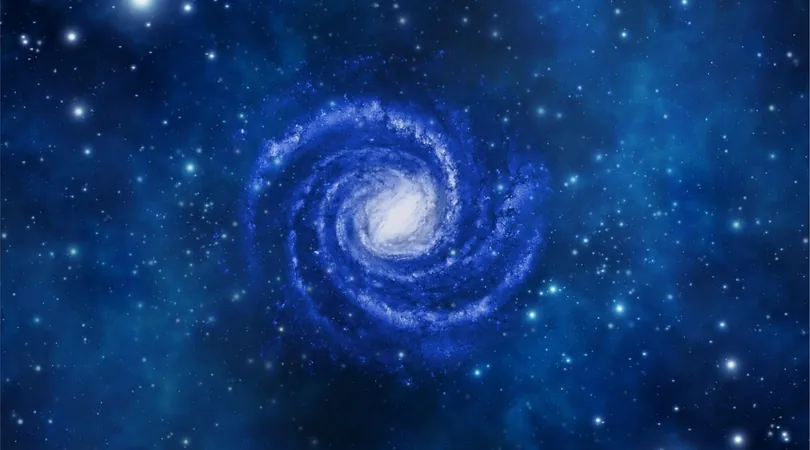
Saturn Shatters Records with 128 Newly Discovered Moons, Reaching a Staggering Total of 274!
2025-03-24
Author: Li
Saturn's Title as Moon Champion
In an astronomical revelation that's sending shockwaves through the scientific community, Saturn has officially claimed its title as the moon champion of our solar system! On March 11, 2025, the International Astronomical Union announced the recognition of a staggering 128 new moons orbiting the gas giant, pushing Saturn's total moon count to a mind-blowing 274. This unprecedented number surpasses the combined moon counts of all seven other planets in our solar system—making Saturn the ultimate celestial heavyweight.
The Enigmatic History of Saturn's Moons
While many are enamored by Saturn's breathtaking rings, this discovery shifts focus to a more intriguing aspect: the enigmatic history of its moons. Astronomers speculate that a significant collision occurred around 100 million years ago, possibly between a larger moon and a comet or another moon. This cataclysmic event likely generated the debris that would form Saturn's iconic rings and these recently identified medium-sized moons.
Retrograde Orbits and Formation Theories
One of the most fascinating aspects of this find is the retrograde orbit of many of these new moons—they move in the opposite direction to Saturn's rotation, a characteristic that suggests they didn't form in the traditional manner. Unlike Saturn’s regular moons, such as the largest moon Titan, which formed within the planet's protoplanetary disk, these new additions are thought to be debris from that ancient collision. Interestingly, their small size, averaging just a few miles in diameter, highlights the stark contrast with our own moon, which is a colossal 2,159 miles across.
Enceladus: A Potential Haven for Life
Among Saturn's notable moons is Enceladus, a world that has captured the imagination of scientists searching for extraterrestrial life. With a hidden ocean beneath its icy surface and geysers spewing water vapor and organic molecules, Enceladus was long considered a potential haven for life. While some argue that the connection to the collision event diminishes its chances for habitability, it’s important to note that Enceladus maintains a stable, prograde orbit. This stability suggests it may have originated much earlier, alongside the formation of the solar system 4.5 billion years ago—plenty of time for life to potentially develop.
The Quest for Understanding Saturn's Moons
As we delve deeper into the intricacies of Saturn's moon system, the implications of these discoveries could redefine our understanding of moon formation and the solar system's evolutionary history. The excitement surrounding these new moons reignites interest in Saturn, spurring further investigations into its many wonders. Who knows what other secrets this titan of the solar system holds? Scientists are eager to continue unraveling the mystery, and with new technology on the horizon, the quest for understanding Saturn’s enigmatic moons is just beginning.
Conclusion: An Exhilarating Journey Ahead
So, buckle up for an exhilarating journey as we explore the cosmos—Saturn is back in the spotlight, and this is just the beginning!



 Brasil (PT)
Brasil (PT)
 Canada (EN)
Canada (EN)
 Chile (ES)
Chile (ES)
 Česko (CS)
Česko (CS)
 대한민국 (KO)
대한민국 (KO)
 España (ES)
España (ES)
 France (FR)
France (FR)
 Hong Kong (EN)
Hong Kong (EN)
 Italia (IT)
Italia (IT)
 日本 (JA)
日本 (JA)
 Magyarország (HU)
Magyarország (HU)
 Norge (NO)
Norge (NO)
 Polska (PL)
Polska (PL)
 Schweiz (DE)
Schweiz (DE)
 Singapore (EN)
Singapore (EN)
 Sverige (SV)
Sverige (SV)
 Suomi (FI)
Suomi (FI)
 Türkiye (TR)
Türkiye (TR)
 الإمارات العربية المتحدة (AR)
الإمارات العربية المتحدة (AR)